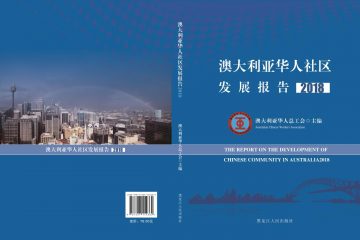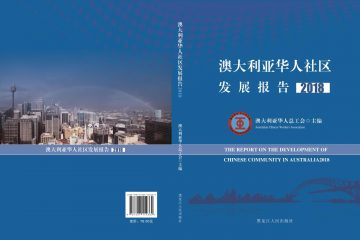2019 is leaving from us and year 2020 is approaching. While you are enjoying the new year holiday, we would like to introduce you a remarkable article:
Rethinking the Middle Class: Theory, History and Typology——With a Global Perspective. We hope you would enjoy it during your holiday, and if you have any comments or idea regarding this article, please don’t hesitate to contact us or leave your opinions below. Sharing is caring!
Editor’s Notes from David Chen, Chairman of the ACWA
In this issue, we republished an article by Professor Zhou Xiaohong (Chinese Version), a famous theorist in the area of middle class. In this article, Professor Zhou combined the current situation of globalization from the perspective of history to review and look ahead to the theory of the middle class.
We republished this article because it played a crucial role in the theoretical norms we mentioned in 《The Report on the development of Chinese community in Australia 2018》, which aims to guide the construction of a Chinese community into a community dominated by the middle class.
In the human society of the 21st century, the mode of production and way of life have undergone revolutionary changes driven by the wave of information and the emerging trend of big data.
Globalization and decentralization will become two complementary historical forces that push the human society irreversibly into the middle class society and the universal society.
However, on the eve of this historic change, we witnessed the collapse of the traditional middle class in the developed world, including the United States, Japan and Europe. That was one reason why voters in the United States, France, Finland and elsewhere elected non-mainstream populist candidates as their leaders. They needed changes to help them regain their former middle-class lives.
At the same time, China, India and other developing BRIC countries possessed a mushrooming middle class. This was also a kind of historical dialectics, which led us to review the previous theories and find a series of new theories.
In our view, to establish a basic theoretical framework, we must pay attention to the root of the problem — the definitions of commodities, labor and management.
With the evolution of human social structure from clan to tribe, social division of labor and distribution existed throughout history, and the attributes and values of commodities became measures.
By the traditional method of class analysis, the society was divided into two parts. Also, the attributes and values of commodities were assembled in a binary way.
We believe that only a comprehensive historical description of the value of commodities can help us comprehend its attributes, and then make a social division of labor and distribution in line with the essence of things.
In our opinion, the value of commodities is represented by three stages, namely production, sale and consumption. It can be expressed simply by a formula, V=V(P)+V(S)+V(C).
In the whole production stage, monetary capital plays a leading role through the purchase of labor tools and the workplace, employment of labor, management and organization of production activities. Monetary capital uses this leading role to monopolize the distribution right of profits generated by the increase in value of commodities, which is created in the production process.
This is the fundamental reason for the emergence of social bifurcation.
In the sales process, the sales staff and related institutions commercialize the value of commodities through expressions. During this process, the value of commodities is capitalized.
In the process of consumption, people generate a series of derivative demands through consumption, which stimulate new production and assign further value to commodities.
In these three processes, management (including research and design), as the most creative labor, generates value to the factors of production by way of assignment.
Actually, the value of commodities is generated by human creativity and the temporal-spatial attributes of commodities, that is to say, the temporal-spatial attributes of commodities make it increase automatically by the nature of the commodities themselves, while human creativity and labor materialize this self-owned attributes.
In the past, management in large-scale production activities was realized through the management system. With public attributes, the management system is a comprehensive product of social, cultural, economic and political factors, and also a production tool (platform) on which the management relies to get income.
The capitalists monopolized monetary capital and large labor tools, including the management system, and then squeezed the laborers by increasing labor intensity and extending labor time. They silently deprived the value generated by the management system, furthermore, they seized the value created by the temporal-spatial attributes of commodities by controlling the state machinery.
In the era of big data, a series of concepts including money, capital, credit and so on will be redefined. Human production and other social public activities will be completed in a collaborative way through various public platforms built by big data
In this way, management systems that include the state machinery, other factors of production that include the means of production, places, and funds, and the temporal-spatial attributes of commodities, will be truly publicized.
Owners of capital and management system will be separated from these public attributes.
All participants in the production process only participate as laborers, and all laborers cooperate equally in the labor process and labor system.
Labor will be getting freedom. The unit and overall value of labor will be measured by the intrinsic creativity and the temporal-spatial dimensions of this process.
In this sense, there will be no dualization of social class in the future, and only the middle class as a description of the social state will persist.
We recommend reading Professor Zhou’s article (Chinese) to think deeply about some issues and find inspirations for building a new module of theories of middle class.


0 Comments